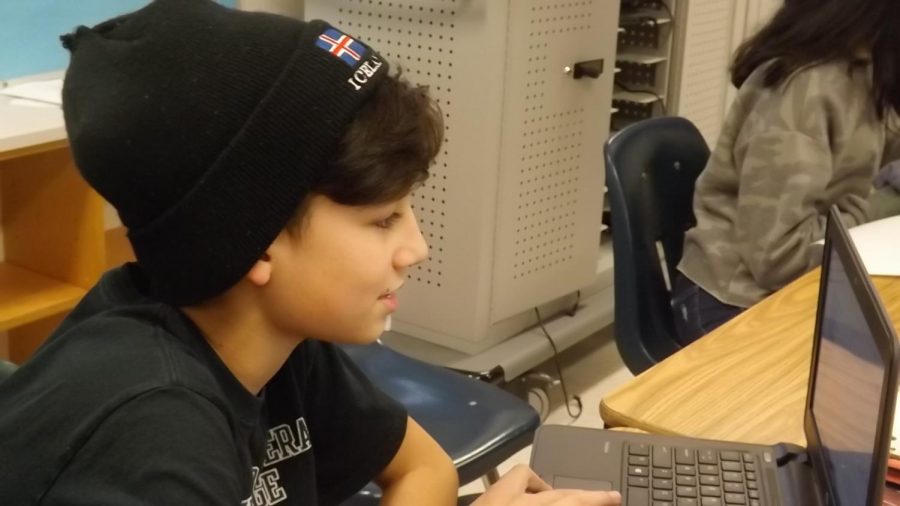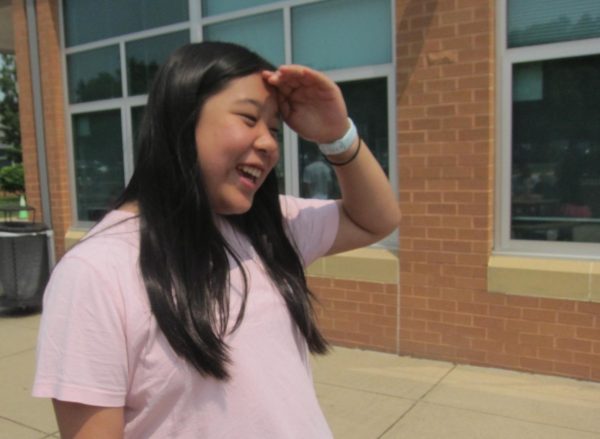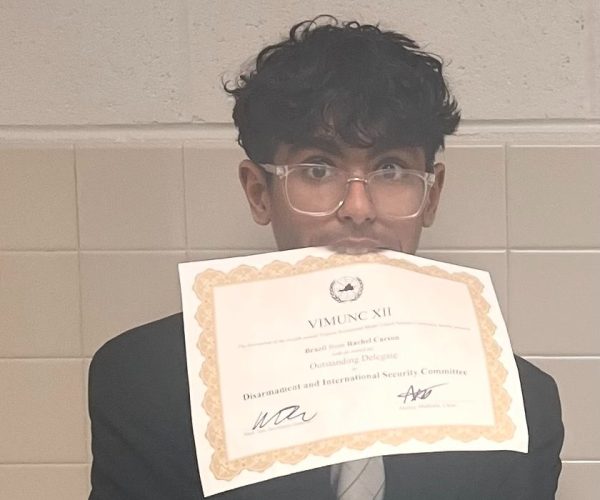For Legacy student, every season is beanie season
How one Carson student uses headgear to make a statement.
“My head feels naked without them,” Rehaan D’Souza-Bohannon, a seventh-grader on the Legacy team, says, patting the Panic! at the Disco-themed beanie on his brown mess of hair. “That’s why I say every season is beanie season. I can’t live without them.”
Rehaan loves beanies. As in, loves beanies. There’s rarely a day where you spy him in the halls without one of the peculiar hats on his head—even though that’s in flagrant defiance of the school’s “no hats in school” policy.
Rehaan’s beanie obsession started in the fourth grade. “Back then I used to cut my hair really short,” he says. “My head started getting cold, and one day in an Abercrombie & Fitch I spied a beanie. I thought, ‘That looks so cool,’ and stuffed it on my head.” Spreading his arms wide, he says, “And I’ve been addicted ever since.”
“Beanies are a really cool medium to express oneself. They’re different. Wacky. So, you know, they’re my favorite. Each one I select makes a difference, a statement. Otherwise, what’s the point?” Rehaan says.
Rehaan’s always concerned with making a statement. Being the needle in the haystack, the diamond in the coal mine. Whether through helping people as an aspiring doctor or tutoring kids with math, Rehaan wants to be—and is—his own person. His use of beanies is no exception, but that is far from the only reason that he wears them.
“I would say beanies made me . . . more comfortable in my own skin. I feel . . . strangely happier, with them. It’s weird, I know,” he says with a chuckle. “Like I said before, they’re a really cool medium—and a lot of people either don’t think about them or discount them. But I, like, use the confidence that they give me and I basically apply it everywhere. I mean, they’re there for comfort during a stressful test and stuff, but most importantly, they help me tell my story, you know? Earn my place at the table.”
If his current closet situation is any indication, Rehaan doesn’t seem to be moving on from beanies any time soon. “That’s probably for the best,” he says. “I don’t know who I would be without these . . . ”—he slides his palm around his scalp, creating wrinkles in his once-smooth chocolate-colored head of hair—“these . . . mediums of expression. Let’s call them that. Sounds much more intellectual than ‘beanie.’”

Vishwa Rakasi is a seventh-grader on Legacy. In his spare time, he dabbles in screenwriting, regular writing, poetry, and competitive swimming. His favorite...





